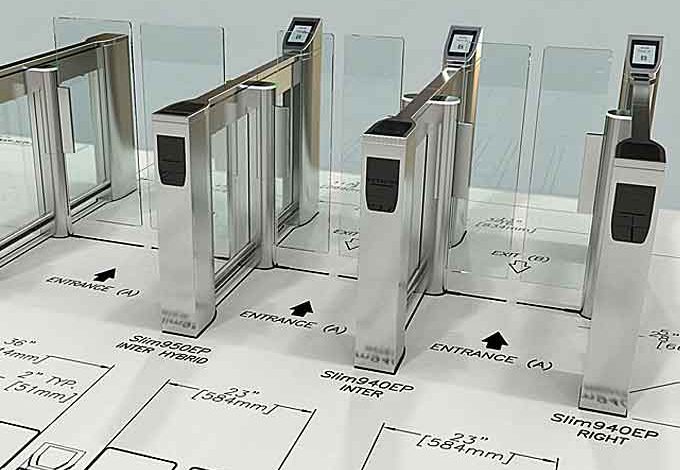The Evolution of Pedestrian Turnstiles: From Manual to Automated Systems

Pedestrian turnstiles have undergone a remarkable evolution over the years, transforming from manual mechanical barriers to highly sophisticated automated systems. These systems are designed to efficiently control the flow of pedestrians, enhance security measures, and improve overall access control. In this article, we will trace the evolution of pedestrian turnstiles, highlighting the advancements in technology and the benefits they offer in various environments.Pedestrian Turnstiles
- Manual Mechanical Turnstiles:
The earliest forms of pedestrian turnstiles were simple mechanical barriers, operated manually by individuals. These turnstiles typically consisted of horizontal bars or rotating arms, which allowed one person to pass through at a time while preventing others from entering without authorization. While effective in controlling access, these manual turnstiles required physical intervention and were prone to delays, congestion, and potential security breaches.Pedestrian Turnstiles
- Optical Turnstiles:
As technology advanced, the introduction of optical turnstiles revolutionized pedestrian access control. Optical turnstiles use infrared or laser sensors to detect the movement of individuals. These turnstiles are designed with glass or acrylic barriers, creating a sleek and modern appearance. Optical turnstiles can be configured with various sensors and scanning technologies to validate access credentials, such as tickets or access cards. They offer a higher level of security and efficiency compared to manual turnstiles.Pedestrian Turnstiles
- Tripod Turnstiles:
Tripod turnstiles are another significant advancement in the evolution of pedestrian access control systems. These turnstiles feature rotating arms that form a tripod shape, allowing for controlled passage. Tripod turnstiles provide a balance between security and ease of use, as they are sturdy and resistant to tampering while offering a more straightforward experience for users. These turnstiles are commonly used in environments with moderate foot traffic, such as public transportation stations and small office buildings.Pedestrian Turnstiles
- Full Height Turnstiles:
Full height turnstiles offer a higher degree of security and restrict access to only authorized individuals. These turnstiles are taller in height, typically reaching from the floor to the ceiling. Full height turnstiles are usually constructed with sturdy materials like stainless steel or reinforced glass to prevent unauthorized entry. Due to their robust design, these turnstiles are resistant to vandalism and provide a clear visual deterrent. Full height turnstiles are commonly used in high-security areas such as prisons, military installations, and stadiums.
- Automated Turnstiles:
The latest evolution in pedestrian turnstiles is the development of fully automated systems. These turnstiles incorporate advanced technologies, such as biometric authentication, facial recognition, and contactless access control. Automated turnstiles provide a seamless and efficient user experience, with fast processing times and minimal waiting periods. These turnstiles can be integrated with access control systems and centralized management software, enabling real-time monitoring, data collection, and analytics for enhanced security and operational insights.
- Integration and Customization:
Modern pedestrian turnstile are highly customizable and can be seamlessly integrated with other security systems and access control technologies. For example, turnstiles can be integrated with CCTV cameras, allowing video surveillance of individuals passing through. Integration with intrusion detection systems can trigger alarms in the event of unauthorized access attempts. This level of integration enhances security measures and enables a comprehensive approach to access control.
Conclusion:
The evolution of pedestrian turnstile from manual mechanical barriers to automated systems has transformed the way access control is managed. The introduction of optical turnstiles, tripod turnstiles, full height turnstiles, and fully automated systems has provided increasingly secure, efficient, and customizable solutions for various environments. Whether it is controlling access in transportation hubs, corporate offices, or high-security facilities, there is a turnstile option available to meet specific requirements. The continued advancements in turnstile technology will undoubtedly contribute to a safer and more streamlined pedestrian access experience in the future. Whether it is controlling access in transportation hubs








